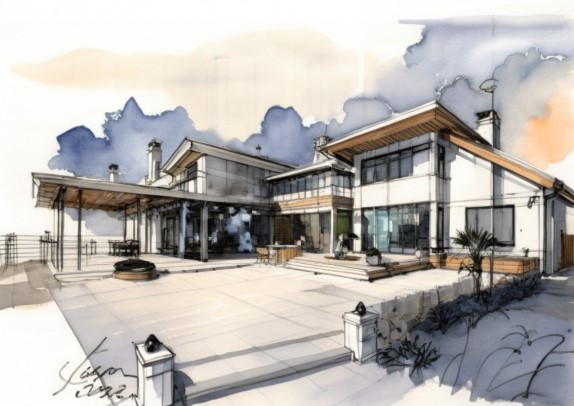Imagine… Reimagine: Turning Existing Buildings into Living Assets

Why Rebuild When You Can Reimagine?
In Ontario’s unpredictable market, rebuilding from scratch can feel like a leap into uncertainty — soaring costs, prolonged timelines, and endless approvals. Yet there’s another path, quieter but far more strategic: revitalization.
It’s the art of seeing the story still living within your building — then shaping it, sustainably and intelligently, through design.
Revitalization isn’t nostalgia; it’s reinvestment. When guided by schematic design, it turns what’s already there into a living asset — one that adapts, performs, and inspires.
Instead of starting over, you start smarter.
Design-Led Reinvestment: Seeing Value Before It’s Built
The most profitable revitalization projects begin with imagination grounded in analysis. Through schematic design, we explore possibilities early — before construction budgets tighten or opportunities vanish.
At ISD Architects, we treat every building as a framework for new potential. A minor shift in layout, an added mezzanine, or a reworked entry sequence can transform a property’s function and market value.
By combining spatial logic, energy performance, and visual impact, schematic design becomes a planning tool that makes revitalization measurable — not guesswork.
Comfort as the New Currency
Design isn’t just about ROI — it’s about how a place makes you feel.
Today’s homeowners and investors alike understand that comfort is the real driver of long-term value. Natural light, warmth, acoustics, and flexibility all play into how a space performs — financially and emotionally.
Revitalization lets you respond to that shift without excess cost. It focuses resources where they matter most: the experience of being inside. A well-lit kitchen, a reconnected backyard, or a passive cooling strategy adds both comfort and capital.
Passive Design, Real Returns
Revitalization thrives when it’s built on passive principles — small moves that make big differences:
- Reorienting openings to capture winter light and minimize summer glare.
- Adding cross-ventilation for comfort without mechanical dependence.
- Upgrading envelope layers to reduce heating demand by up to 40%.
These design gestures are not luxuries; they are financial instruments that reduce operating costs and increase long-term building value.
When energy efficiency and architecture speak the same language, ROI becomes an inevitable outcome.
Adaptive Design for a Changing Future
Revitalization isn’t just repair — it’s resilience.
Through schematic foresight, you can prepare a building for multiple futures:
- Convert part of your home into a rental suite later.
- Integrate solar readiness or EV charging when the time is right.
- Phase your upgrades so each step adds measurable performance and value.
In an uncertain economy, adaptability is your best investment strategy.
The Art of Re-Envisioning
What separates revitalization from renovation is intent. Renovation replaces; revitalization reveals.
It uncovers a building’s inherent character — its rhythm, its connection to light and land — and reframes it in today’s context.
This is where schematic design shines.
A few sketches can show multiple futures for the same structure: modern yet grounded, efficient yet expressive. These aren’t just drawings; they’re visions tested for value.
Your Next Step: Imagine the Possibility
The buildings we live in still have stories left to tell.
Through schematic revitalization, you can transform your property into something more meaningful — sustainable, profitable, and profoundly livable.
💡 Want to explore how revitalization can elevate your property’s value and performance?
Get your Project Planning Pack or schedule a schematic review session to reimagine what’s possible.
